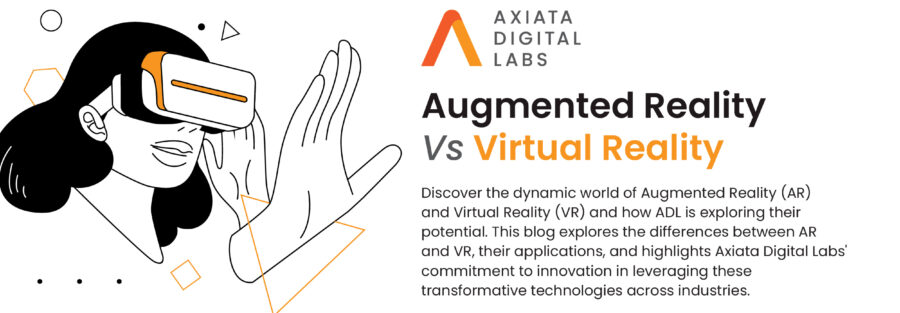In the ever-evolving landscape of digital technology, Augmented Reality (AR) and Virtual Reality (VR) have emerged as groundbreaking innovations that are transforming various industries. Axiata Digital Labs, a leading technology company, has recognized the immense potential of AR and VR and is actively exploring their applications. In this blog, we will delve into the world of AR and VR, understand their differences, and explore how ADL is harnessing their capabilities.
Augmented Reality is a technology that overlays virtual objects or information onto the real world, enhancing the user’s perception and interaction with their surroundings. By blending computer-generated elements with the physical environment, AR offers an immersive experience that bridges the gap between the real and virtual worlds. It finds applications in sectors such as gaming, retail, healthcare, and education, among others.
Virtual Reality, on the other hand, immerses users in a completely simulated digital environment, shutting out the physical world. With the use of headsets or goggles, VR creates a convincing illusion of being present in a virtual realm. This technology has gained significant traction in gaming, entertainment, training, and even therapeutic applications.
Augmented Reality vs Virtual Reality: Understanding the Differences:
While AR and VR share the goal of enhancing user experiences, they differ in their approach and applications. The key differences lie in their level of immersion and the relationship with the real world:
a. Immersion: VR offers a fully immersive experience by transporting users to a virtual environment, isolating them from the real world. In contrast, AR provides a partially immersive experience, overlaying digital elements onto the real world while maintaining the user’s connection with their surroundings.
b. Real-World Interaction: AR maintains a strong connection with the real world, allowing users to interact with both virtual and physical objects simultaneously. VR, on the other hand, focuses on a purely virtual environment, limiting real-world interaction.
c. Applications: AR finds practical applications in scenarios where users require real-time information or assistance, such as virtual shopping, navigation, and remote collaboration. VR excels in creating highly immersive simulations for training, gaming, and creating virtual experiences.
Axiata Digital Labs and AR/VR:
ADL recognizes the immense potential of AR and VR in driving innovation and transforming industries, exploring how these technologies can be integrated into its products and services to create unique and engaging experiences for its customers. By leveraging its expertise in software development, data analytics, and user experience design, ADL aims to unlock the full potential of AR and VR across various sectors.
Conclusion:
Augmented Reality (AR) and Virtual Reality (VR) are revolutionizing the way we interact with the digital world. ADL acknowledges their significance and actively incorporates these technologies into its portfolio. As AR and VR continue to evolve, ADL is poised to drive innovation and push boundaries, shaping the future of these immersive technologies and their impact on various industries.




